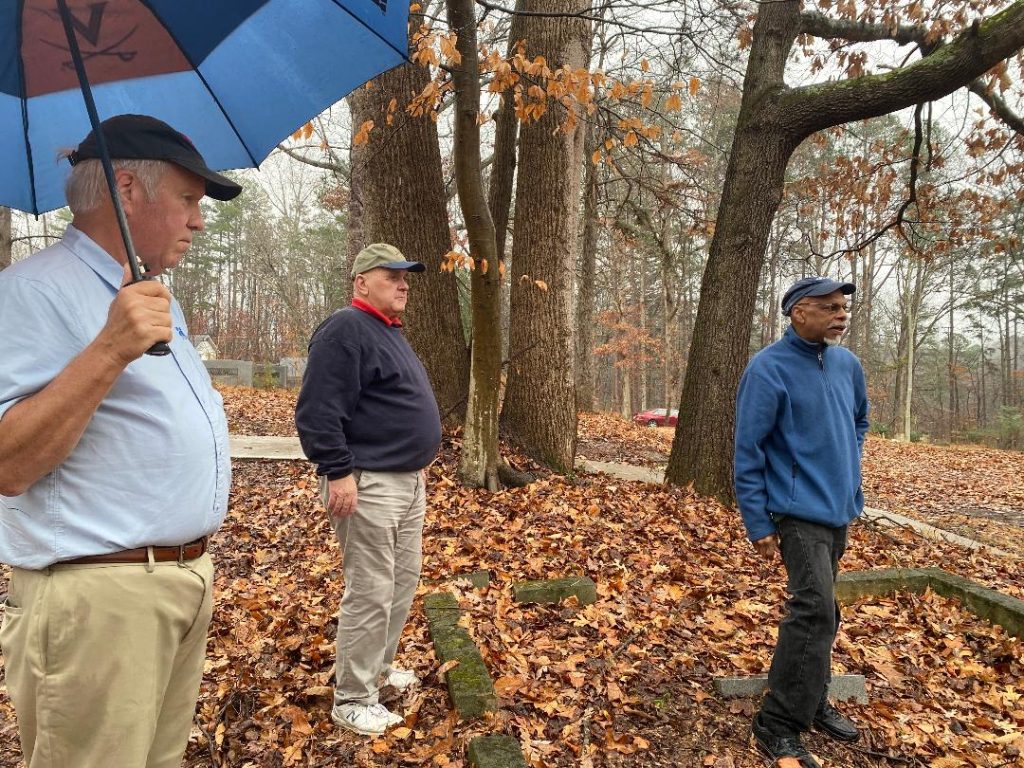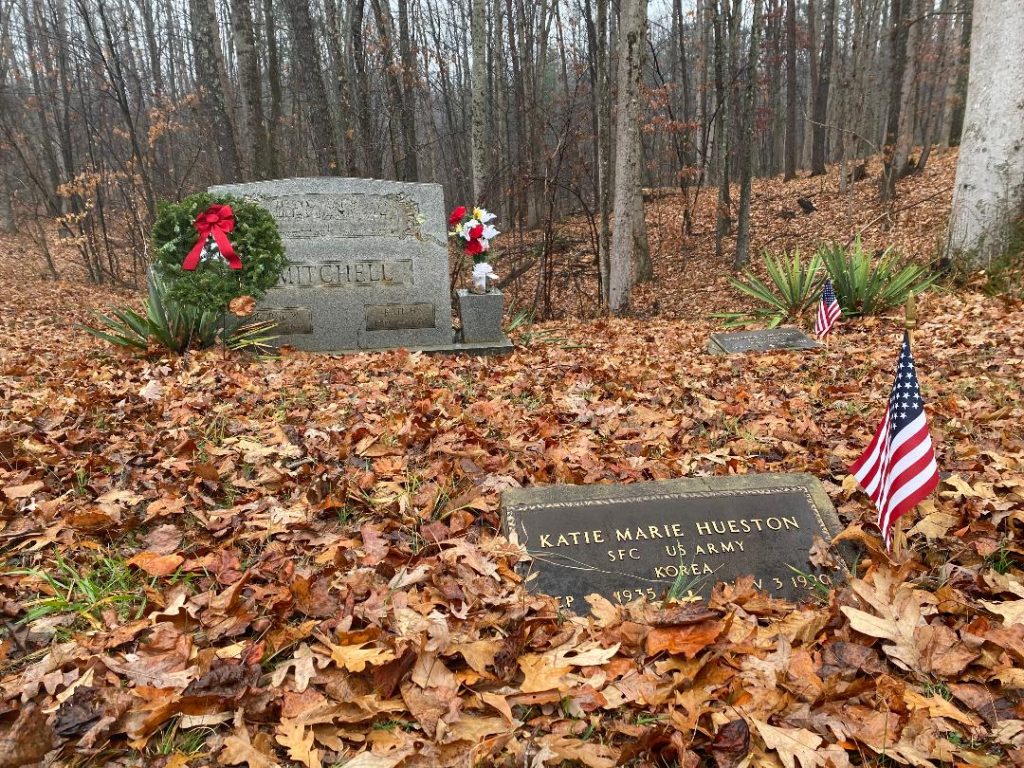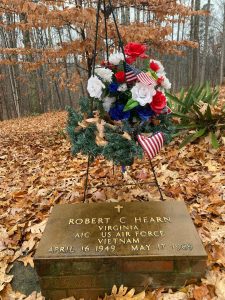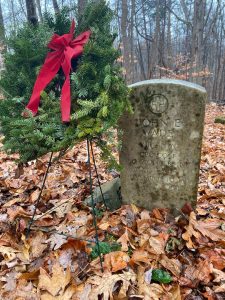
By Callie Hietala
On a gray, quiet Saturday morning, just a week before Christmas, three men—Lawrence Mitchell, W.C. Fowlkes, and city council member Danny Turner—gathered at the People’s Cemetery, a historically Black cemetery at the end of 2nd Street in Martinsville.
The constant drizzle of a cold rain fell as they went about their work, placing wreathes upon the graves of veterans to honor their memory at the holidays.
Mitchell, Fowlkes, and Turner were among those participating National Wreaths Across America Day, a day of commemoration which, Fowlkes said, began at Arlington and eventually expanded to all national cemeteries.
More than 200 miles away in Arlington National Cemetery, and at more than 3,000 other graveyards nationwide, others were following suit, placing wreathes upon the grave markers of those who served in the Armed Forces.

The grave of Lawrence Mitchell’s aunt, Katie Marie Hueston, is marked with a flag. She served in Guam during the Korean conflict. In the background are graves of other relatives who also served, including his father, Lawrence Sr., in the right corner. Also visible are the spiky leaves of the yucca plant, used throughout the People’s Cemetery as grave markers for families who could not afford a headstone.
“They’ve got 50,000 people out there (at Arlington National Cemetery) putting out wreaths,” Fowlkes said.
Turner said that some money was left over from funds raised among community members for a recent 911 appreciation event. The funds were used to buy wreaths for the 35 people from Martinsville and Henry County who are buried at Arlington. He said Fowlkes and the veterans service organization ordered other wreaths for local gravesites, which was what brought them to the graveyard that drizzly Saturday morning.
“We have been going from cemetery to cemetery laying wreaths on the graves of vets,” Turner explained, adding that they would continue placing the wreaths over the next several days.
“We don’t have enough to put one on every grave because there’s a least 100 here (in the People’s Cemetery),” Turner said.

Lawrence Mitchell said that Air Force veteran Robert Hearn was one of the first from the area to enlist during the Vietnam War. He enlisted soon after his graduation from Albert Harris.
And there are many other service men and women buried in Martinsville and Henry County graveyards — thousands, according to Fowlkes.
This year, Turner said, veterans who recently passed, those killed in action, or those buried in graves that “look like they might need a little love at Christmastime” were among those remembered with a wreath.
Many of the veteran graves at the People’s Cemetery have been identified through Mitchell’s diligent work – many family members, many of them veterans, are buried in the cemetery. He said his family was one of the first to buy a family plot on the property.
Since moving back to Martinsville after his retirement from Washington D.C.’s Justice Department, Mitchell, who also worked for a time in archaeology at Colonial Williamsburg, has combed through the timber and tangles of the cemetery, working to find graves.
“There’s a whole line of World War II (graves) over there on the pauper’s side,” he said of the area in the cemetery where the poorest were buried. He has identified roughly 200 military graves in the cemetery, “and those are the ones we know of.”
The task is not as straightforward as reading identification on a headstone. Sometimes, he explained, families could not afford to purchase a military grave marker for their loved one due to the expense. Sometimes, he said, because of the cost, families purchased no stone at all, opting instead to mark a grave by planting the spiky-leaved yucca plant over the burial site. The plant, which is non-native to Virginia, is visible across the cemetery grounds.

Turner added that the location of those graves would be recorded in the family Bible.
Mitchell’s family members are buried near the entrance of the cemetery. He said he had several relatives, including his father, who served in various conflicts, among them WWII and Korea.
“When I was growing up, (my father) couldn’t stand thunder,” Mitchell recalled. The elder Mitchell, also named Lawrence, drove troop and supply trucks during WWII. After landing in Europe, Mitchell said his father went to North Africa, driving truckloads of troops from place to place as troops commanded by German General Erwin Rommel bombed the convoys.
Turner said his father served in WWII but, due to his age didn’t see combat. He worked in logistics, primarily camouflage.
Besides participating in the National Day of Commemoration, Turner said he hopes placing the wreaths and honoring the fallen during the holidays will help keep their memories alive.
“You’re not really dead until you’re totally forgotten,” he said, quoting a line he heard while at Arlington.
Thanks to the work of Fowlkes, Turner, and Mitchell, the memories of those who served continue to live on, their grave sites marked by a wreath, a visible marker that, at Christmas, their stories and their sacrifice will be remembered.




